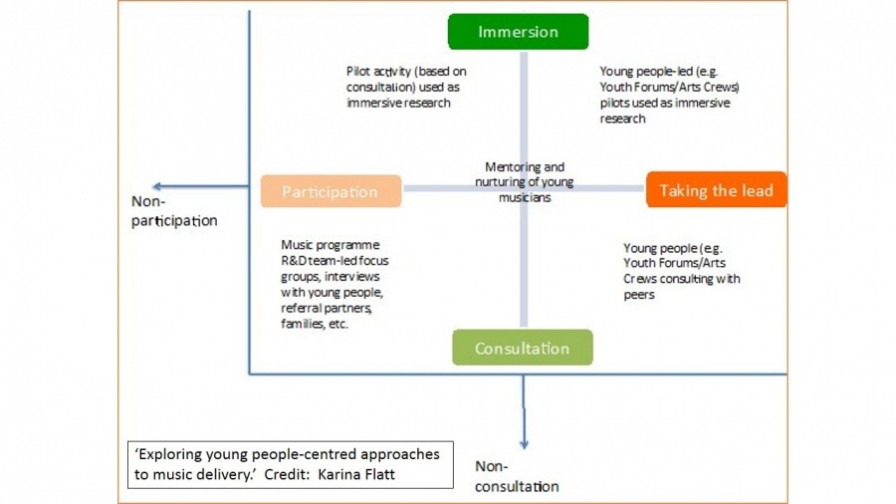‘By, for and with Young People’

Exploring the value of authentic young-people centred music provision.
Over recent years, the world of Arts & Culture seems to have taken inspiration from the principles of democratic government, “of the people, by the people, for the people” to create a mantra which emphasises the potential benefits of young people-centred arts and cultural provision – opportunities that are created “by, for and with” young people.
To my mind, there are two key potential benefits from this in a music context:
Firstly, this approach resonates with much that we value in terms of music delivery: It values the particular needs of every young person and seeks to put those at the heart of the music opportunities they are offered. It means that young people are encouraged to reflect and value what they are doing and empowered to develop aspirations for the future - be those musical, personal or social.
Secondly, a strategic opportunity emerges from this approach: By putting the needs and aspirations of young people at the heart of music provision, a whole range of music content and delivery approaches can be explored under one umbrella, underpinning the strategic development of 'quality' music provision on a level playing field. The Youth Music quality framework is a useful tool in this.
But how does this play out in practice?
The Garage has been looking to explore this as part of our Strand C programme of work across our region. We have used a range of approaches, which we have started to map according to the level and nature of young people involvement:
- From non-participation through to taking the lead on activity; and
- From being consulted to taking part in immersive experiences which absorb the young person in the actual activity.
This explores more than one conception of a ‘young people-centred’ approach, which in turn explores the potential strategic opportunities outlined above as well as the potential direct benefits to young musicians. The way in which our music projects and consultation fit with this matrix of approaches is mapped in the diagram shown above.
Next steps are to compare and contrast the value (or lack thereof) and the nature of that value (or the nature of its absence) across these approaches. We aim to post a follow-up blog once the evaluation of our year 1 Strand C programme, ‘innovate, test, embed’ is complete.
